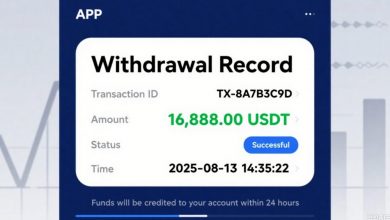Ovulation Calculator: Estimating The Most Fertile Days Of A Woman

More women are facing challenges to get pregnant for some reasons. It can be a cause of health problems for the woman herself or for her partner. Only a professional doctor can say who can’t bear a child, either the woman or the man, after a thorough checkup. After getting the results that both the man and the woman can bear a child, spot the right fertile time.
Räkna ut ägglossning is the solution to getting pregnant, which is an essential step for women trying to develop a baby. Understanding when ovulation occurs helps identify the most fertile days of a woman’s cycle. Also, it increases the chances of a successful pregnancy.
What does ovulation mean to women?
Ovulation is a natural process that happens on the monthly cycle of a woman. It is when an egg is released from one of the ovaries. It occurs halfway through the cycle. It takes around 12 to 16 days before the next period. The egg travels down the fallopian tube and is fertilized by sperm, which may lead to pregnancy.
Ovulation is a part of getting pregnant. It marks the most fertile time in a woman’s menstrual cycle. Some signs of ovulation include:
- mild cramps
- changes in discharge
- slight rise in body temperature
Understanding ovulation helps plan a pregnancy naturally.
When does ovulation occur?
Ovulation occurs in almost 14 days. It happens prior to the next period. But it can change depending on the cycle length. The process becomes easier to track the signs, such as:
- cervical mucus
- body temperature
- using ovulation kits
Knowing the right timing helps couples plan intercourse more effectively. The right ovulation calculator and awareness can calculate ovulation for getting pregnant and a smoother journey.
Guide to use the ovulation calculator!
An ovulation calculator is a tool for women to get pregnant. The tool helps find the most fertile days. It works by estimating when ovulation happens in your menstrual cycle. You need to know the 2 things when using it:
- The first day of your last period
- The average length of your cycle
A normal cycle is 26 to 32 days. Entering this information into the calculator shows the estimated ovulation data and the fertility window. These are the days of getting pregnant. The calculator helps a woman plan the best time to have intercourse when trying to develop a baby.
It is essential to remember that ovulation calculators provide estimates and may not be exact for all. Tracking the signs of ovulation improves accuracy. Using the calculator regularly with a combination of other tracking methods increases the chances of pregnancy. The ovulation calculator is simple to use, and it is the first step towards understanding the cycle and boosting the chances of getting pregnant naturally.
Average ovulation calculator accuracy
The average accuracy of the ovulation calculator is about 70% to 85%. Thus, it gives a good estimation, yet not always exact. However, many women are relying on this tool due to the higher percentage of accuracy.
The result of the ovulation calculator varies from one woman to another. The calculator is accurate when a woman has regular menstrual periods. But the ovulation timing can be affected for several reasons:
- stress
- illness
- changes in routine
It is helpful to combine the calculator with the other methods for better results, such as:
- tracking body temperature
- using ovulation test kits
It gives a clearer picture of when you like to ovulate.
Conclusion
Tracking a woman’s fertile days is possible using an ovulation calculator. A woman can plan a pregnancy to make it easier. Time will be saved, and it reduces the guessing. The tool provides a better understanding of the menstrual cycle and what to do. When used with other methods, it increases the chances of getting pregnant naturally and effectively.

Source: Ovulation Calculator: Estimating The Most Fertile Days Of A Woman


